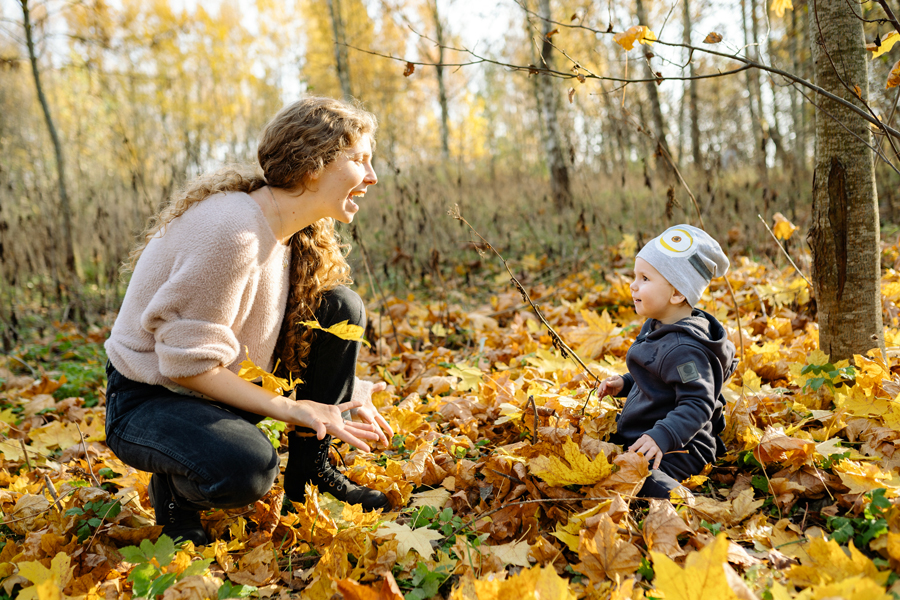Autumn Ailments: Tips on Living with Ragweed & Dander
So, you lived through spring and summer allergens, and if pollen Is your problem, you may get a break when the weather gets cooler. However, the arrival of fall doesn’t mean the end of allergens. Indoor allergies may actually get worse as you start spending more time inside, and ragweed can cause problems through fall. That’s because it releases pollen when the weather is warmer during the day and cooler at night. So, what can you do about autumn allergens? We have a few tips to help you stay healthy.
What Fall Allergens Should I Worry About?
What fall allergens may have you sniffling and sneezing with a stuffy nose and itchy, watery eyes? Outside, the culprits are usually pollen and ragweed, while indoor allergens include mold, dust mites, and pet dander. Keeping your house clean and washing your bed linens once a week in hot water should keep dust mites at bay while keeping your home well-ventilated, and immediately fixing leaks can help control mold growth. Ragweed and pet dander, however, are a little trickier to control.
How Can I Reduce Ragweed Pollen Exposure?
If you’re sensitive to the pollen released by spring plants, you’re likely to react to ragweed because about 75 percent of people with spring allergies are also allergic to ragweed. However, don’t think you’re safe just because ragweed doesn’t grow in your area: wind can carry ragweed pollen hundreds of miles. What are some good ways to handle ragweed?
Stay inside when pollen counts are high. Peak ragweed hours are between 10 a.m.-3 p.m., so if you don’t need to go out during those hours, stay inside. It’s also wise to check the weather forecast every day; pollen counts tend to be higher on hot, dry, and windy days than on cool, damp, rainy, and windless days. If you can’t stay inside, keep pollen out of your hair and eyes by wearing a hat and glasses.
Keep pollen out of your house. When you go outside, take off your shoes, shower, and change your clothes when you come inside. That way, you’ll avoid tracking pollen through your house. Another way to reduce airborne allergens in your home is by using high-efficiency particulate air (HEPA) filters in your air conditioner and keeping the windows closed.
Take your medicine. It can be helpful to take antihistamine medications during your most active levels of the day to block the effects of the histamine released by your body during an allergic reaction. Decongestants and corticosteroid nasal sprays can also help, and allergy shots provide long-term relief.
Be aware that proteins similar to ragweed pollen are also found in other sources. For example, eating bananas, melons, sunflower seeds, and chamomile tea can all trigger allergies if you’re sensitive to ragweed.
How Can I Reduce Pet Dander Exposure?
Pet dander is another problem when you’re spending a lot of time indoors. Your warm-blooded companion animals, including cats, dogs, birds, and rodents, all have dead skin cells we call animal dander. The proteins found in this dander, saliva or urine, cause pet allergies; you’re not allergic to the physical animal. HEPA filters can help keep dander under control, especially when your vacuum has one, and damp dusting is also helpful. Our most helpful piece of advice, though, is to keep your pets out of your bedrooms if you’re allergic and bathe them once a week.
Is There Anything Else I Can Do for My Allergies?
You can also try home remedies, staying hydrated, and nasal sprays. In addition, many people find that healthy lifestyle habits can help combat allergies. Eating a nutritious diet, exercising regularly, getting enough sleep, and practicing mindfulness are all healthy habits to pursue, and they may help alleviate allergy symptoms. For lasting relief, though, trust a professional, board-certified allergist.
If you’re suffering the effects of autumn allergens, enlisting the help of an experienced, board-certified allergist can help you find the solutions you need to manage your allergies. All Allergy & Asthma Specialists’ physicians are board certified in allergy and immunology and can help you identify triggers and learn to control your symptoms. Call (866) 966-0583 or visit the website for an appointment or to learn more about available services.



